
- News/Events
- Arts and Sciences
- Design and the Arts
- Engineering
- Global Futures
- Health Solutions
- Nursing and Health Innovation
- Public Service and Community Solutions
- University College
- Thunderbird School of Global Management
- Polytechnic
- Downtown Phoenix
- Online and Extended
- Lake Havasu
- Research Park
- Washington D.C.
- Biology Bits
- Bird Finder
- Coloring Pages
- Experiments and Activities
- Games and Simulations
- Quizzes in Other Languages
- Virtual Reality (VR)
- World of Biology
- Meet Our Biologists
- Listen and Watch
- PLOSable Biology
- All About Autism
- Xs and Ys: How Our Sex Is Decided
- When Blood Types Shouldn’t Mix: Rh and Pregnancy
- What Is the Menstrual Cycle?
- Understanding Intersex
- The Mysterious Case of the Missing Periods
- Summarizing Sex Traits
- Shedding Light on Endometriosis
- Periods: What Should You Expect?
- Menstruation Matters
- Investigating In Vitro Fertilization
- Introducing the IUD
- How Fast Do Embryos Grow?
- Helpful Sex Hormones
- Getting to Know the Germ Layers
- Gender versus Biological Sex: What’s the Difference?
- Gender Identities and Expression
- Focusing on Female Infertility
- Fetal Alcohol Syndrome and Pregnancy
- Ectopic Pregnancy: An Unexpected Path
- Creating Chimeras
- Confronting Human Chimerism
- Cells, Frozen in Time
- EvMed Edits
- Stories in Other Languages
- Virtual Reality
- Zoom Gallery
- Ugly Bug Galleries
- Ask a Question
- Top Questions
- Question Guidelines
- Permissions
- Information Collected
- Author and Artist Notes
- Share Ask A Biologist
- Articles & News
- Our Volunteers
- Teacher Toolbox


show/hide words to know
Biome: a large area of plants and animals that occur naturally.
Virtual: a simulated (made up) environment based on the real world. Often computers are used to create virtual worlds.
Explore Biomes in Virtual Reality
While it is fun to visit and explore each biome in person, it is not likely that you can get to all of them. So we are creating 360 tours of the different biomes that you can use to explore and learn about each biome. It is like having your own private window looking into these amazing places. Even better, you can use a computer, a tablet, or your smartphone to explore these biomes. We do recommend a larger screen device for the best experience.
For those who have been exploring our biomes, we are announcing the release of our newest version of tours, or version 2.0. These tours now include our tour guide, Bella, who can read the text in our collection of new galleries and videos. We also released the first of our marine biomes complete with sharks, coral reefs, and a shipwreck. We also welcome your feedback and suggestions.
While we complete our changes, and add a few more biomes, you can try out the new tours by entering the new portal .
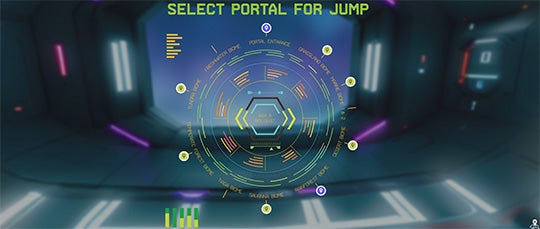
More about Biomes 2.0
These new tours have been made possible by the work of the following people. Without them we could not have brought you the new interface and new tours.
- Tony Redhead - VR interface designer extraordinaire
- Andrew James Ferris - Freediver, VR photographer, and your guide to the Pacific ocean tour stops
- Captain Seawolf - Our trusty captain for the Bahama marine tour stops
- Dimensions.com - Animal dimensions and illustrations used with permission.
- Additional funding by ASU Learning Enterprise
How to explore the virtual biomes 1.0
Bottom menu icons.
Biologist Notebook
When you explore these different biomes you will want to take notes of what you see and hear. You can use your own notebook, or download our custom designed Biologist Notebook that can be used to document your travels and discoveries.
Desert Biome VR 360
This virtual biome is from the desert southwest of the United States. This biome is filled with desert plants and animals. See if you can find biologist Karla Moeller who is studying Gila monsters. Oh, and be sure to be on the lookout for the rattlesnake.
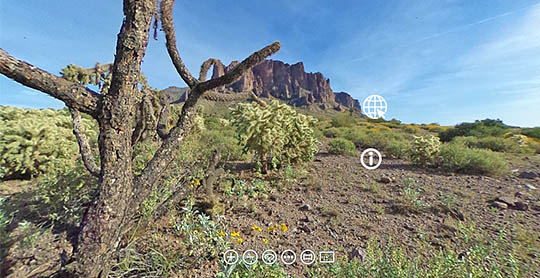
As you explore this biome, take notes on the types of plants and animals you find. Here are a few questions to get you started.
- How are the plants and animals different than in other biomes?
- What would you expect to be the biggest challenges for plants and animals that live in the desert?
- Can you find the rattlesnake, Gila monster, and bird nest?
- Learn more about the desert biome .
Grassland Biome VR 360
This virtual biome explores the grasslands of the United States, across Iowa, South Dakota, Montana, and Wyoming. See how many different bird calls you can find and learn all about the types of grasslands that are disappearing from biologist Meghann Jarchow. Don't miss the butterfly video in this tour.
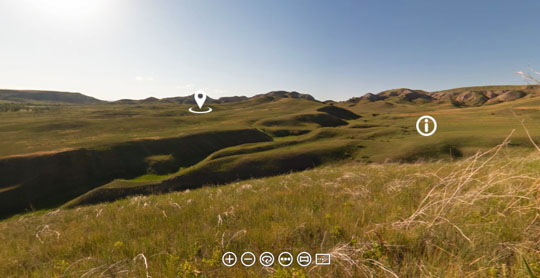
- What would you expect to be the biggest challenges for plants and animals that live in the grassland?
- Can you find the harvester ant hill, the red-winged blackbird, and the cup plant?
- Learn more about the grassland biome .
Rainforest Biome VR 360
Pop into this virtual rainforest found in Panama. Listen to the animals and explore the lush green plant life. Biologists David Pearson, Karla Moeller, and Peter Marting are also there to show you around this biome. If you click on Karla, you can listen to her talking about what they are doing in the rainforest. Be sure to track down the howler monkey in this tour.
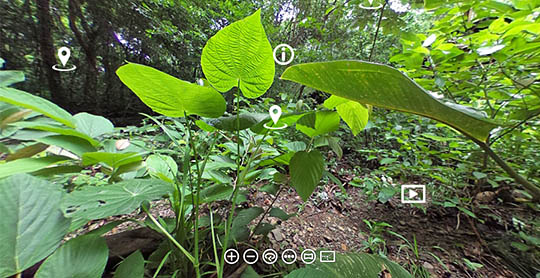
- What would you expect to be the biggest challenges for plants and animals that live in the rainforest?
- Can you find the termite nest?
- What role do fungi have in the forest?
- Learn more about the rainforest biome .
Savanna VR 360
This virtual biome allows you to explore the savanna of Kenya Africa. Join biologist Beth Pringle and her research team as they travel in the savanna where they are researching the relationship between some ants and trees that live in this biome. While they are out they also see many animals that make the savanna their home. Be sure to find Beth and click on her to hear her talk about the research and animals that are part of the virtual tour. Later, you can read her PLOSable story, Trees Get By with Ant Aides , to learn more about her research.
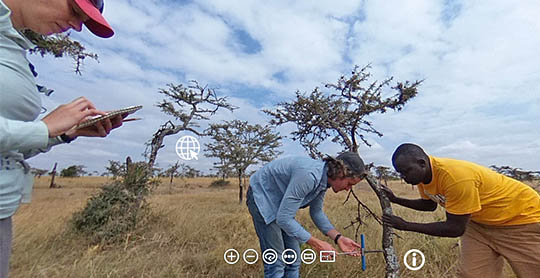
- What would you expect to be the biggest challenges for plants and animals that live in the savanna?
- How many animals can you find in this trip?
- What would it be like to live in the savanna?
- Learn more about the savanna biome
Temperate Forest VR 360
This virtual biome allows you to explore the temperate forest in North America. Not only can you jump from location to location, you can also travel in time. Look for the time travel icons that let you move between summer, fall, and winter seasons.

- What differences are there between the different seasons?
- What animals or signs of animals can you find?
- Learn more about the temperate forest biome .
Tundra VR 360
Tundras are cold, wind-swept areas where low-growing bushes, grasses, and mosses seem to rule the land. Travel around the country of Iceland to check out many faces of the tundra, but without the biting cold. This tour has some extra stops, so make sure to check the thumbnail menu so you don't miss any locations.

- Learn more about the tundra biome .
Desert 360 images by CJ Kazilek. Locations include Lost Dutchman State Park, Senoran Desert east of Picacho, South Mountain Park, Arizona. Audio recording at locations by CJ Kazilek.
Savanna 360 images by Beth Pringle.
VR-360 Video of hyena: Courtesy of Wildlife Protection Solutions .
Rainforest 360 images by Karla Moeller. Locations include Pipeline Road, Gamboa, Panama. Audio recordings at locations by CJ Kazilek.
Video host: David Pearson.
Temperate forest 360 images by CJ Kazilek. Locations include Mount Humphrey Arizona, and Keystone Colorado. Audio recordings at locations by CJ Kazilek.
Points of interest by: David Pearson, Karla Moeller, and Charles Kazilek.
Read more about: Boundless Biomes
View citation, bibliographic details:.
- Article: Virtual Biomes
- Author(s): Charles Kazilek
- Publisher: CJ Kazilek
- Site name: ASU - Ask A Biologist
- Date published: August 24, 2016
- Date accessed: April 8, 2024
- Link: https://askabiologist.asu.edu/explore/Virtual-360-Biomes
Charles Kazilek. (2016, August 24). Virtual Biomes. ASU - Ask A Biologist. Retrieved April 8, 2024 from https://askabiologist.asu.edu/explore/Virtual-360-Biomes
Chicago Manual of Style
Charles Kazilek. "Virtual Biomes". ASU - Ask A Biologist. 24 August, 2016. https://askabiologist.asu.edu/explore/Virtual-360-Biomes
MLA 2017 Style
Charles Kazilek. "Virtual Biomes". ASU - Ask A Biologist. 24 Aug 2016. ASU - Ask A Biologist, Web. 8 Apr 2024. https://askabiologist.asu.edu/explore/Virtual-360-Biomes

Learn more about -
Other Biomes
Boundless Biomes
Be part of ask a biologist.
By volunteering, or simply sending us feedback on the site. Scientists, teachers, writers, illustrators, and translators are all important to the program. If you are interested in helping with the website we have a Volunteers page to get the process started.
Share to Google Classroom
Discover exciting careers in science and beyond by exploring fun virtual Worktours of real companies.
Want more VR that’s out of this world? Run experiments in an alien zoo’s virtual laboratory with ASU’s Dreamscape Learn .
- Skip to global NPS navigation
- Skip to this park navigation
- Skip to the main content
- Skip to this park information section
- Skip to the footer section

Exiting nps.gov
Alerts in effect, virtual tours in the redwoods.
Last updated: December 17, 2020
Park footer
Contact info, mailing address:.
1111 Second Street Crescent City, CA 95531
707 464-6101
Stay Connected
We have emailed you a PDF version of the article you requested.
Can't find the email?
Please check your spam or junk folder
You can also add [email protected] to your safe senders list to ensure you never miss a message from us.
Explore The Amazon With This Stunning 360° Virtual Reality Video
Complete the form below and we will email you a PDF version
Cancel and go back
IFLScience needs the contact information you provide to us to contact you about our products and services. You may unsubscribe from these communications at any time.
For information on how to unsubscribe, as well as our privacy practices and commitment to protecting your privacy, check out our Privacy Policy
Complete the form below to listen to the audio version of this article
Advertisement
Sign up today to get weekly science coverage direct to your inbox
© 2024 IFLScience. All Rights Reserved
Newsletters in your inbox!
Subscribe today for our Weekly Newsletter in your inbox!
Senior Journalist
Tom is a writer in London with a Master's degree in Journalism whose editorial work covers anything from health and the environment to technology and archaeology.
Book View full profile
Book Read IFLScience Editorial Policy
DOWNLOAD PDF VERSION

ARTICLE POSTED IN
conservation,
photography,
environment,
deforestation,
virtual reality,
rainforest,
More Nature Stories

Cicadapocaplypse: Map Shows Where In The US Up To A Trillion Bugs Could Soon Emerge

7 Animals With Some Of The Silliest Scientific Names

The World's Southernmost Active Volcano In Antarctica Spews Gold Dust

Is Orange Cat Behavior A Real Thing?

Ligers V Tigons: What's The Difference?

The Pentagon Has Released Several Videos Of Unexplained Anomalous Phenomena

Virtual Forest Tours
These virtual forest tours (VFT) were created in cooperation with Prof. Felipe Bravo and Prof. Dr. José A. Reque Kilchenmann and the Institute for Research for Sustainable Forest Management of the University of Valladolid (iuFOR). Visit the homepage for more information, various supplementing tours and further learning materials.
To get a deeper understanding of the creation process of a virtual forest tour, see also the provided materials at tutorials .
Virtual forest tour from VNU-HUS
“Welcome to our forest”. Doan Manh Linh and Nguyen Thi Van, students from VNU-HUS, are our guides through the campus forest in Hanoi.
Take a look at the virtual tour here .
Together with Prof. Dr. José A. Reque Kilchenmann the VNU students Doan Manh Linh, Nguyen Thi Van, Nguyen Hoang Nam, Pham Minh Anh (photographic field work) and Ngo Xuan Phong (picture stitching) produced a 360 degree video using simple equipment including a tripod, a nodal head and a digital camera. Click here to open the tour in a new tab. The VFT will be integrated into the curricula as low cost teaching tools independent from the usual limitations like costs, accessibility, course schedule and climatic conditions.
Marteloscope-VFT from the HNEE
In autumn 2019, a VFT was created at a Marteloscope site in Eberswalde, close to the forest monument “Möllergrab”.
In cooperation with Prof. Dr. Peter Spathelf, the students Torben Föhrder and Lina Wernicke from Eberswalde University for Sustainable Development produced a 360 degree panorama tour of the site, using the same techniques and equipment as described in the previous article. To visit this mixed pine-beech stand in a new tab click here .
Windthrow-VFT from the HNEE
Another forest site close to Eberswalde University for Sustainable Development is now accessible by a virtual 360 degree tour. The former mixed beech-oak stand was severely damaged by a storm in 2017. The resulting windthrow area was captured to provide a reference for monitoring regeneration and stand development over time.
The HNEE students Torben Föhrder and Lina Wernicke created this virtual tour in cooperation with Prof. Dr. Spathelf and the BioEcoN project. Click here to open it in a new tab.
BioEcoN Virtual Forest Tours

- Virtual Forest Tours
Virtual forest tours
360° virtual forest tours (VFTs), created by state-of-the-art virtual reality technology, contribute to advance academic e-learning, forest management and environmental awareness.
A virtual replication of real-world forest stands allows for repeatable experience in a specific area of interest, independently of the current weather conditions, season of the year or transport. The exchange of (detailed, computerized) academic knowledge in connection to forestry (e.g. types of vegetation and structural composition, growth over time, or effects of natural disasters) can be fostered by the opportunities offered by 360° VFT.
The 360° VFTs offer visual impressions of environmental conditions at a particular geographical location that can be compared with each other. This makes VFTs a holistic and comprehensive medium for understanding the complex interdependencies that exist within a forest ecosystem. The level of immersion provided by 360° VFTs cannot be accomplished by traditional textual or photographic learning materials.
Take a walk on the wild side - digitally
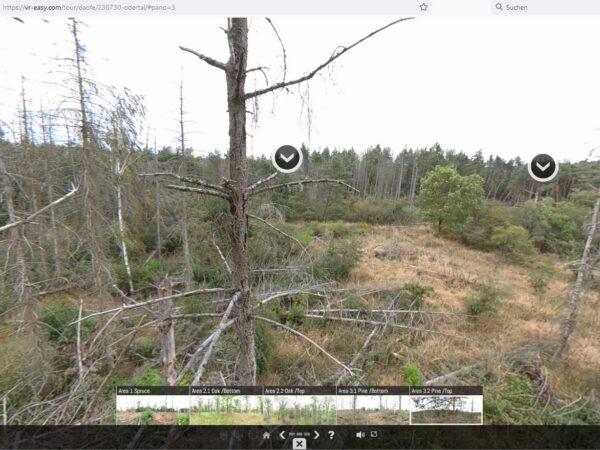
Making calamity areas accessible
IFEM students Merlin Hartwig and Timm Dörder take us on a virtual...

The Digital Forest Lab Haselberg is online
It4Forest congratulates Nele L. Römer and Evelyn Wallor for establishing a fantastic...
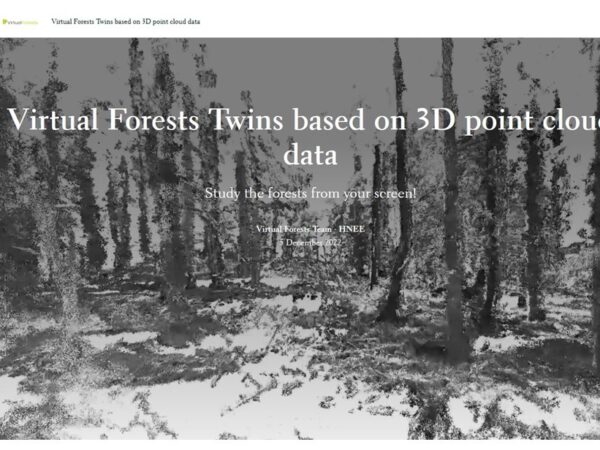
Study forests from your screen
Virtual Forests Twins based on 3D point cloud data allows studing forests...

A conceptual framework for 360° VFT production
360° virtual forest tours (VFTs), created by state-of-the-art virtual reality technology, contribute...

“Welcome to our forest”
In the framework of the BioEcoN project the VNU students Doan Manh...

Marteloscope – learning tool documented
HNEE students Torben Föhrder and Lina Wernicke from Eberswalde University for Sustainable...
Discover Resources on Virtual Tours
Discover different resources on virtual forest tours below:
Virtual tours (VT) on agenda
The German congress of geography saw a session that showcased immersive visualisation techniques in education.
Virtual Forest Tours discussed in podcast
Prof. Jan-Peter Mund and HNEE graduate Torben Foehrder were guest in the “ The Versatilist” podcast of The Immersive Learning Research Network.
Virtual Forest Tours to Supplement Academic Forestry Education
Read an article that summarizes the advantages of 360° VFTs for forestry education in an academic context.
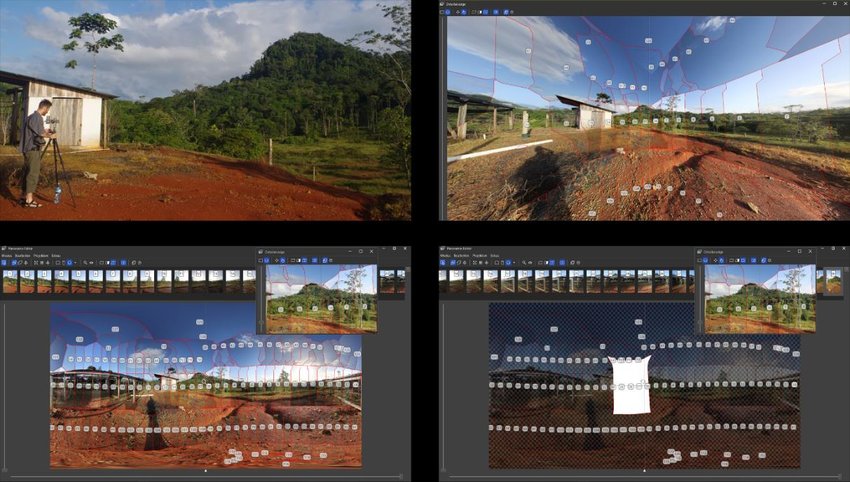
virtualforest.eu
The Virtual Forest project was enhancing online, distance and blended learning in the forest sector. Discover more.
Privacy Overview
Great Trossachs Forest
Take a 360° virtual tour
About The Great Trossachs Forest
The Great Trossachs Forest is a landscape scale (16,500 hectares), native woodland reestablishment and conservation project. It is a 200 year partnership project, which in just over ten years has earned itself the accolade of becoming the UK’s largest and newest (2015) National Nature Reserve. Our work is providing a space for nature and also creating a lasting legacy for future generations to continue to enjoy and experience this special landscape.
To date, partners (Woodland Trust Scotland, Forestry Commission Scotland and RSPB Scotland)along with Heritage Lottery funding have planted over 1.5 million native trees to help create a natural mosaic of native woodlands of different ages, species and densities. A host of excellent visitor facilities including two Visitor Gateways, and our extensive path network of more than 165kms of maintained trails - including our long distance path, The Great Trossachs Path – enable people to access, enjoy and appreciate nature in the heart of the Loch Lomond and the Trossachs National Park.
This photo tour highlights some of the special qualities of the Trossachs as well showcasing the beautiful scenery over the seasons. There are twelve panoramas to enjoy – taken on mountain tops, in ancient woodlands and by our sparkling loch shores. Come and visit to see how the sights and sounds of The Great Trossachs Forest change throughout the year.
Lendrick Oakwood
This ancient woodland at Lendrick Hill is very important. There have been trees here for many centuries and a variety of species including flowering plants, insects and fungi depend on the woodland for their existence.
The Woodland Trust Scotland manages the oakwood, which is a few minutes’ walk from their Glen Finglas Visitor Gateway, to ensure that it is healthy and remains a great home for wildlife.
Visiting this viewpoint : Take the Drippan loop or The Great Trossachs Path from the Lendrick Hill car park, (near Brig o’ Turk on A821).
Download PDF tourist leaflet
Oak Woodland
Lower Lendrick Oakwood is one of a number of ancient woodlands in The Great Trossachs Forest National Nature Reserve. We are creating a corridor connecting these fragmented woodlands together across a huge area, restoring the landscape to a more natural mix of moorlands, wetlands and native woodlands.
Dead wood is a very important part of healthy woodland so we leave fallen branches on the ground rather than tidying them up. Lots of plants, animals and fungi rely on dead wood and it maintains the cycle of nutrients and nitrogen needed to maintain a strong ecosystem.
Trees that have died and are still standing are also great places for birds like owls to find holes and hollows that they can call home.
If you come here between May and June you are a likely to see a spectular shimmering carpet of bluebells. Ancient woodlands, like Lendrick Oakwood, have existed for centuries and have built up an array of special and beautiful plants and animals that depend on this habitat.
The sweet scent and intense blue colour of bluebells makes for one of nature’s most stunning displays but they are under threat from non-native varieties. Please don’t pick them, it deprives bees, butterflies and other insects of an important source of nectar.
This fence has been built to protect new woodland growing further up the hill. Young trees are particularly susceptible to be being damaged by deer. These fences are temporary and will keep the deer out whilst the young trees grow. Once the trees are tall enough these fences will be removed and deer will be free to roam in their natural woodland habitat.
Why do leaves change colour?
Autumn is a great time to explore woods, when nature treats us to a last burst of colour before winter sets in. Leaves change colour in autumn because decreasing sunlight slows down photosynthesis and reduces the amount of chlorophyll (the pigment that makes leaves green) in each leaf. This allows the red, yellows and orange pigments already present in the leaves to be revealed.
According to Nature's Calendar (a project managed by the Woodland Trust) autumn officially starts on 21 September. Monitoring this date helps us discover how our climate is changing.
Red squirrels
Autumn is a great time to look for red squirrels hiding their food for the winter. Listen for them rustling in the fallen leaves or look up high in the trees for a glimpse of one dashing along a branch. Red squirrels are smaller and more agile than non-native greys and their distinctive russet colour and bushy tails are tell-tale signs.
Winter in the woods
Roots, branches and twigs can endure freezing temperatures but most leaves are not so tough. Water in the thin leaves of most broadleaf species, like birch, would freeze in winter causing damage to the trees, so they seal them off causing leaves to die and then fall off.
Evergreen trees like Scots pine and yew have thin needles that don’t freeze so they can stay attached all the year. In some oak trees the layer of cells at the base of the leaf doesn’t fully detach so the dead leaves can remain on the tree throughout the winter.
Woodpeckers
Greater spotted and green woodpeckers are often heard drumming and calling in these woods. You can also listen out for other woodland birds such as jays, blackbirds, and long-tailed tits.
Lendrick Hill
Lendrick Hill looks out over Loch Venachar. This viewpoint is along a loop path starting at the Woodland Trust Scotland’s Glen Finglas Visitor Gateway. In winter, cattle graze the open slopes of the hill and black grouse breed nearby.
Visiting this viewpoint : Follow The Great Trossachs Path from Callander or the Lendrick lower loop walk from the Lendrick Hill car park, (near Brig o’ Turk on A821).
What conservation work is happening here?
Once covered in ancient woodland, commercial conifers replaced these native trees in the 20th Century. The Woodland Trust Scotland is gradually restoring this woodland back to native species. This is a long-term project that will bring back a whole range of habitats here from lochside to mountain top.
Little Druim Wood
There is a natural play and sculpture trail in Little Druim Wood suitable for all the family. Allow 40 minutes for a stroll around this ancient oakwood and see if you can wake up the resident troll. The play trail starts from the Lendrick Hill car park.
Black Grouse
Black grouse breed nearby in spring. Male birds gather at leks where dance and show off their white tails to attract females. Habitat loss has resulted in plummeting numbers of black grouse in the UK over the last 100 years. But here they’re holding their ground because they have the mosaic of woodland, bracken and heather habitats they need to survive.

In summer time many Scottish hillsides are blanketed in heather. Pink flowers are visible from all parts of The Great Trossachs Nature Reserve. Heather grows best in poor, wet soils, grows in clumps to provide some wind protection. Heather is a source of nectar which provides vital food for many insects. It also makes very tasty honey.
Loch Venachar and Black Water Marshes
At the head of Loch Venachar is the Blackwater Marshes, a special area of wild marshland offering providing ideal habitat for brown trout, pike and lampreys. Herons and ospreys can sometimes be seen feeding on the fish.
Berries on trees
In autumn rowan trees are easily identified by their bright red berries. These berries are an important food source for many birds and they are also a firm favourite with pine martens. Rowan seeds are spread a long way through droppings so they can often be found growing high on hillsides and even from the trunks of other trees.

Recovering from fire
In 2003 there was a fire in this area that destroyed a huge area of young woodland. Thankfully this woodland and the surrounding moorland have now recovered from this damage and are well established.
Sileage field
During the summer months, grass grows in these fields near the loch. Before autumn really starts, the long grass is cut and wrapped into bales to provide food for the cattle during the winter.
During most of the winter, the top of Ben Venue is covered in snow. Snow can protect the soil and the microorganisms within it by acting as a cosy insulating blanket, stopping the ground from getting as cold as the freezing air above.
Ben Venue is a popular hike for hill walkers. It takes about 3 hours to reach the summit. From there you can enjoy stunning views of across much of the Loch Lomond and the Trossachs National Park.
Finding food in winter
Whilst some animals migrate or hibernate during the winter, many reside here all year round. Birds such as black grouse survive in the winter by eating heather and the buds of trees (such as these birch trees). Squirrels rely on food that they have stashed away during the autumn.

Loch Venachar
The Blackwater Marshes Site of Special Scientific Interest is at the west end of Loch Venachar. It is designated because a mosaic of wetland habitats supports rare plants including melancholy thistle and marsh orchid. Salmon and lamprey can be found in the loch.
Visiting this viewpoint : You can get here by following the path from the car park at Little Druim Wood.
Changing water levels
The level of Loch Venachar can change dramatically depending on the weather. Many of the plants here are amphibious, meaning that they can survive in and out of water.
Grazing ground
The Woodland Trust Scotland uses hardy Luing cattle for conservation grazing to keep vegetation down to look after special habitats on-site. Cows give birth to their calves here in spring.

There is a natural play and sculpture trail in Little Druim Wood suitable for all the family. Allow 40 minutes for a stroll around this ancient oakwood. The play trail starts in the Lendrick Hill car park.

In summer magnificent ospreys can be seen swooping down into Loch Venachar to catch fish in their sharp claws. Ospreys come to Scotland from Africa to breed. They can be distinguished from other birds of prey by their distinctive white breasts.

Autumn colour
At this time of year you can clearly see the difference between the native broadleaf trees which have gold and brown autumn colour and dark green commercial conifers.
Ben Venue is covered in snow. Snow can protect the soil and the microorganisms within it by acting as a cosy insulating blanket, stopping the ground from getting as cold as the freezing air above.
Ben Venue is a popular hike for hill walkers. It takes about 3 hours to reach the summit. From there you can enjoy stunning views of the Loch Lomond and the Trossachs National Park.
Wintering birds on Loch Venachar
Every year geese migrate from the Arctic to spend winter on Loch Venachar. If you are quiet this is a good spot place to get a close up view. Other birds like teal and mallards are often spotted on the loch, and sometimes you might see a swan or goldeneye.
Ben Venue is one of the tallest mountains in the Trossachs and it offers views across almost all of The Great Trossachs Forest National Nature Reserve. A path maintained by Forest Enterprise Scotland (the land management arm of Forestry Commission Scotland) leads from the car park to the summit.
Visiting this viewpoint : A hill path leads to the summit from the Ben Venue car park.
Upland habitats
Much of The Great Trossachs Forest National Nature Reserve is open hill above the tree line. In the past this ground was heavily grazed but now moorland habitats are slowly recovering.
Healthy uplands are extremely important. They can store water preventing flooding further downhill, they lock up carbon in the ground, and they are home to special wildlife including golden eagles and red grouse.
The dead conifer trees in this area are an experiment in action. 50% of these trees were ring barked (the lower bark was removed) and 50% were chemically treated. These trees were originally going to be felled but it was difficult to extract the timber and so it was decided to experiment with different techniques to create deadwood habitats.
Glasahoile/ash trees
A number of surveys have been carried out in this area. Tree ring dating revealed the ash trees here are the oldest which have ben dated in Scotland.
There are remnants of a farm at Glasahoile and the age, spacing and structure of the oak trees here tell us that in 1700s they were coppiced (cut to the base) to provide tanning bark & later chocwood for constructing the water supply tunnels.
Where did the trees go?
The non-native conifers visible in the autumn panorama were felled before the next summer. This area is being restored back to native woodland and is helping us create a native woodland corridor within The Great Trossachs Forest National Nature Reserve.

Woodland Corridor
A continuous corridor of woodland is forming along the lower slopes of The Great Trossachs Forest National Nature Reserve. This area (Ben A’an and Brenachoile Woods) is in the middle of this woodland corridor.
There are three main partners working together within The Great Trossachs Forest National Nature Reserve: Forestry Commission Scotland, RSPB Scotland and Woodland Trust Scotland.
Loch Achray, Loch Venachar and Brig o’ Turk
Loch Achray and Venachar are very prominent from the top of Ben Venue. The village of Brig o’ Turk sits in the woodland between the lochs.
Steamship Sir Walter Scott
The steamship Sir Walter Scott has been sailing on Loch Katrine for over 100 years. It is named after the poet and author who helped to make the Trossachs a popular destination. The ship is powered by cooking oil which helps to protect the quality of Loch Katrine – the water supply for Glasgow.
The True Trossachs
The word Trossachs comes from the Gaelic for a wooded glen. It was originally just the name of a small woodland between Ben A’an and Ben Venue, and Loch Achray and Loch Katrine, but over time the Trossachs has come to refer to a much larger region.
This woodland area forms part of the Ben A’an and Brenachoile Woods Site of Special Scientific Interest and the Trossachs Special Area of Conservation. These designations recognise the importance of the trees and the plants living here.
Ben A’an, known as the ‘pointed peak’, is at the heart of the Trossachs.
A strenuous but relatively short path maintained by Forest Enterprise Scotland (the land management arm of the Forestry Commission Scotland) offers spectacular views from the summit, where you can see a wide sweep of loch and woodland spread out below.
The Trossachs
This woodland forms part of the Ben A’an and Brenachoile Woods Site of Special Scientific Interest and the Trossachs Special Area of Conservation. These designations recognise the importance of the trees and the plants living here.
A continuous corridor of woodland is forming along the lower slopes of The Great Trossachs Forest National Nature Reserve. The reserve stretches west towards the Arrochar Alps in the distance.
Just behind this rock is Creag an Fhithich, Gaelic for crag of the raven. Ravens can often be seen here so they must like the area. Ravens are the largest member of the crow family. They are very intelligent birds and they have a very varied diet including carrion, insects and berries.
Autumn is a time of beauty when nature treats us to a burst of vivid colour before winter sets in. Leaves change colour in autumn because the lack of sunlight slows the food making process (photosynthesis) and reduces the amount of green pigment (chlorophyll) in each leaf. This allows the other coloured pigments (the reds, yellows and oranges) to be revealed. Cool nights can also accelerate colour change.
Monarchs of the Glen
During autumn you might experience one Scotland’s natural wonders - the red deer rut. Stags fight with each other using their large antlers to win the right to mate with females. They also compete through a low roaring call that can be heard for many miles around.

Brenachoile Point
Brenachoile Point juts out into Loch Katrine. It is a great location to stop and take in the beauty of the loch and maybe even enjoy a picnic.
A path leads here from the car park at the Trossachs Pier. Along the route are a number of panels about the many works of art and literature that have been inspired by the area.
Visiting this viewpoint : Follow the Brenachoile Trail or The Great Trossachs Path from the Trossachs Pier car park.
Brenachoile Woods
This woodland forms part of the Ben A’an and Brenachoile woods Site of Special Scientific Interest . The woods look fantastic at this time of year and they are home to a wide range of wildlife.
The designation recognises the importance of the trees and the plants living here.
Compass Viewpoint
This compass viewpoint is part of The Great Trossachs Forest Art and Literature trail. You can stand in the footsteps of artistic and literary greats who have been inspired by this area. There are quotes from Sir Walter Scott, Horatio McCulloch , John Ruskin and William Wordsworth, who were all heavily influenced by the stunning beauty of the Trossachs.
“The summer dawn’s reflected hue To purple changed Loch Katrine blue, Mildly and soft the western breeze Just kiss’d the lake, just stirr’d the trees, And the pleased lake, like maiden coy, Trembled but dimpled not for joy.” From the Lady of the Lake by Sir Walter Scott
“Everything in art is but a copy of nature” Rob Roy by Sir Walter Scott
“The dewy ground was dark and cold, Behind, all gloomy to behold; And stepping westward seemed to be A kind of heavenly destiny” Stepping Westward by William Wordsworth
New montane habitat
We are creating new woodland on this upper slopes of this hill. To create a more natural transition between mature woodland and the open hill we are planting a band of shrubby trees such as juniper, willow and hazel. This habitat is known as montane woodland.
Arrochar Alps
These high mountains are known as the Arrochar Alps. They loom over the west side of Loch Lomond outside the boundary of The Great Trossachs Forest National Nature Reserve.
Woodland corridor
The contrast between the white areas of snow and the surrounding darker areas shows where trees are growing. It is great display of the woodland corridor being created as part of The Great Trossachs Forest National Nature Reserve.
Purple birch trees
Even in winter the woods are still colourful. The purple tint of the birch trees is especially clear from this viewpoint looking into the Brenachoile Woods.
Water supply for Glasgow
Loch Katrine was chosen as the water supply for Glasgow because it is relatively close to the city, but also because its deep waters never freeze, even in the coldest winter.
Pollochro Woods, Inversnaid
Pollochro Woods are part of Scotland’s temperate rainforest. They are managed by RSPB Scotland to take care of the many rare and important species that make this ancient woodland their home.
Visiting this viewpoint : The Woodland Trail leading from the car park at Inversnaid Pier runs through these woods.
Important Woodland
Pollochro Woods are home to a range of important species and habitat that RSPB Scotland are working to protect. It is one of the largest wet woodlands in the area and the impressive beards of lichen and moss dripping from the branches of these old oak trees are a sign of tree age and clean air.
These woods are so important they have been designated as an Site of Special Scientific Interest .
Important connections
Pollochro Woods is a very important part of our planned native woodland corridor because it connects woodland within The Great Trossachs Forest National Nature Reserve to woods that line the shore of Loch Lomond.
If you visit here between May and June you are a likely to see a spectacular shimmering carpet of bluebells. Ancient woodland like Pollochro Woods have existed for centuries and have built up an array of special and beautiful plants and animals that depend on this habitat.
The sweet scent and intense blue colour of bluebells makes for one of nature’s most stunning displays but they are under threat from non-native varieties. Please don’t pick them, it deprives bees, butterflies and other insects of an important source of nectar.
Migrant birds
Spring and early summer is the best time to see and hear a wide variety of birds in the woods. Migrants such as pied flycatcher, redstart, wood warbler and tree pipit come back every year to breed.
Fantastic Fungi
In autumn, the woodland floor and old trees erupt with fungi. A multitude of different types can be found here, including milk cap mushrooms that grow as wide as a dinner plate. Fungi are a vital part of a woodland ecosystem. They help to break down dead wood and release nutrients back into the ground.

Loch Lomond
As the trees gradually the trees lose their leaves, Loch Lomond comes into view. Famously celebrated in song it is Scotland’s largest area of fresh water, covering 70 square kilometres. It straddles the Highland Boundary Fault which has created a string of small islands along the middle of the loch.
There are remnants of an old farm here. It is likely that this was used when these woods were used for charcoal production and iron smelting. However, as coal became more popular, smelting was no longer needed to be undertaken on-site and production was moved to Glasgow.
When the trees are not in leaf, the extent of Loch Lomond really becomes apparent.
Arklet Lochside
Loch Arklet is a beautiful spot that can be seen from the road between Aberfoyle and Inversnaid.
Its name comes from the Gaelic for a high place and it is certainly a remote location. Forest Enterprise Scotland (the land management arm of Forestry Commission Scotland), have planted many native trees above the loch to create new native woodland.
Old Military Road
Hidden halfway up the hillside is the Old Military Road, built in the 18th century to open up the highlands to the army, and recently restored as part of The Great Trossachs Path.
Sensitive landscaping ensures it is not easily visible, but it provides great views and a very scenic route for a walk or a cycle. Some relics of the old path are still evident along the route.
New woodlands
The lower slopes surrounding Loch Arklet have been sparsely planted with new native trees including oak and birch. They are barely visible from here but in time, this woodland will form an important home for wildlife and be part of a long corridor through The Great Trossachs Forest National Nature Reserve.
Rob Roy’s Trees?
These trees are the remains of a wood that Rob Roy would have known well when he lived here in the 18th Century. New native trees have been planted around it to protect and gradually expand the habitat. Eventually this wood will be part of a continuous corridor being established through The Great Trossachs Forest National Nature Reserve.
Black grouse lek
Black grouse breed nearby in spring. Male birds gather at places called leks where dance and show off their white tails to attract females. Habitat loss has resulted in plummeting numbers of black grouse in the UK over the last 100 years. But here they’re holding their ground because they have the mosaic of woodland, bracken and heather habitats they need to survive.

Highland cows are used by Forest Enterprise Scotland (the land management arm of Forestry Commission Scotland) to help encourage tree regeneration, reduce levels of bracken and to maintain the diversity of plants on this area.

Water supply
Loch Arklet has been connected to Loch Katrine by an underground tunnel completed in 1914. This provides extra capacity to the system that supplies Glasgow with clean water. 550 million litres of water - enough to fill more than 200 Olympic sized swimming pools - flow from the Trossachs to Glasgow every day.
Inversnaid Sheep Fank
Owned and managed by RSPB Scotland, This sheep fank looks out onto newly regenerating woodland as well as a variety of open hill habitats.
It can be found at the end of a short but beautiful walk along the upland trail.
Visiting this viewpoint : Follow the upland trail from the RSPB Scotland Inversnaid Visitor Gateway in the Garrison car park.
New habitats, more homes for wildlife
In 2014 thousands of native trees were planted here as part of the conservation work within The Great Trossachs Forest National Nature Reserve.
Species which were planted were oak, hazel and juniper.
Scot’s Pine
Scots pine trees were planted here in 1997. They and are already creating an important new home for nature. Scot’s pine is the only pine tree native to the UK. Pine woodland is home to a number of rare birds (such as Scottish crossbill) but they are an important home for mammals such as red squirrels, pine marten and wildcats.
These trees will also provide year round colour.
Rob Roy’s home
The famous outlaw Rob Roy was married and lived here at Inversnaid for several years. No one is sure exactly, but this sheep fank or the other ruins nearby are two possible sites for his marital home.
Towards the end of his life Roy Roy became a folk hero and in the 19th Century writers including Walter Scott and William Wordsworth added to his celebrity. Several films have been made of his life story.
Wildlife at the sheep fank
The sheep fank is a good place to spot butterflies and dragonflies basking up in the spring sunshine. The stone walls of the fank warm up faster than the surrounding land and the nearby wildflowers provide a great source of nectar.
Bracken contributes to the changing colours during autumn. It is widespread and at the right density it provides shade to woodland plants and is required by butterflies such as the pearl-bordered fritillary. However, it is possible to have too much bracken as it will block out other plants. It is rarely eaten by animals but it does provide a good base for insects to warm up in the sun.
In 2014 thousands of trees including oak, hazel and juniper were planted here to create new native woodland within The Great Trossachs Forest National Nature Reserve.
The majority of the trees planted are deciduous so the autumn colours will get even more extensive as the new woodland establishes. Bracken also adds to the colour change as it dies back and becomes a reddish-brown colour.
During the winter black grouse spend much of their time around young woodland, feeding on buds and heather.
Habitat loss has resulted in plummeting numbers of black grouse in the UK over the last 100 years. In The Great Trossachs Forest Natural Nature Reserve they are holding their ground because they have the mosaic of woodland, bracken and heather they need to survive.

Footprints in the snow
Winter is a great time of year to see the tracks left by species of wildlife that are shy and often hard to find. These prints are likely to have been made by an agile fox searching for a snack. Foxes don’t hibernate so they have to find food to keep warm.
Zoom in to follow these prints along the fence and on top of the wall.
Glen Finglas Viewpoint
Owned and managed by Woodland Trust Scotland, Glen Finglas contains some of the best upland wood pasture habitat in the UK. Some of the trees in this area are hundreds of years old, their width and character shaped by weather and grazing animals and by man’s careful cutting in the past.
This viewpoint looks out over Glen Finglas reservoir from the Meall trail – a challenging hike into the remote Glen Meann, returning down Glen Finglas. The trail starts from the Woodland Trust Scotland’s Glen Finglas Visitor Gateway.
Visiting this viewpoint : Follow the meall loop from the Lendrick Hill car park (near Brig o’ Turk on A821).
Wood pasture
The scattering of lollipop trees on the hillside is an important habitat called wood pasture. It’s a legacy of several centuries of management of the woodland here. People carefully cut the trees in a process called pollarding to provide timber as well as young shoots and shelter for animals. The extensive grassland between trees was kept open for grazing.
Compass viewpoint
This viewpoint is a celebration of the important history of Glen Finglas. It points to locations in the landscape and their importance. Glen Finglas was once a playground for nobles and kings who came here to hunt deer. An island in the loch is thought to be the site of a lodge built for James II. It is also the subject one of Sir Walter Scott’s poems and contains sites relating to ancient religions. Download The Great Trossachs App to find their locations.
Felled Woodland
Non-native trees have been felled along this hillside by Forest Enterprise Scotland (the land management arm of Forestry Commission Scotland). The landscape is being restored to native woodland as part of The Great Trossachs Forest National Nature Reserve. These trees will eventually join up with the wood pasture on the Woodland Trust Scotland’s Glen Finglas estate.
More water for Glasgow
In 1915 a decision was made to dam Finglas Water, creating this reservoir to add to the water already supplied to the growing city of Glasgow from Loch Katrine. Construction of the dam did not start until the 1950s and it was finally completed in 1965. Several old houses in the Glen were demolished to make way for the reservoir and the remains of stone walls can be seen when the water level is very low.
Natural regeneration
Newly planted woodland in The Great Trossachs Forest Natural Nature Reserve is protected from grazing animals using fences to help it expand. Ideally though, woods would be able to spread through natural regeneration. Birch trees can spread extremely quickly, they have lightweight seeds that can scatter and grow far beyond the parent tree. Alder seeds spread on both wind and water.
The majority of the slopes here will become woodland by natural regeneration.
Luing cattle
Cattle are a frequent sight in the glen in the summer. They are used to graze the land, reduce the bracken cover and encourage the natural regeneration of native tree species. Cattle have made use of woodland fringes at Glen Finglas for centuries, leading to the creation of the upland woodland pasture we see here today.

Glen Finglas Riverside
Glen Finglas contains some of the best upland wood pasture habitat in the UK. Some of the trees in this area are hundreds of years old, their width and character shaped by the weather, grazing animals and by years of careful cutting.
This location is a short distance from the day-long loop walk called the Meall trail – a challenging 15 mile hike into the remote Glen Meann that starts from the Woodland Trust Scotland’s Glen Finglas Visitor Gateway.
Alder trees
Most of the trees on the riverside are alders. These trees thrive in damp cool places such as river banks. In turn their deep roots can bind soil together, helping to prevent erosion. These roots also give ideal cover for creatures such as otters and water voles. Because of its strong resistance to water, alder wood was often used in the construction of crannogs, ancient settlements that were built out into lochs.
You can see lines of alder standing like ribs in the framework of the upper glens. They grow well along the steep sides of the burns showing how wet these slopes can sometimes get.
Once upon a time the glen was covered in a native forest of birch, oak, rowan and willow. Now individual old trees are separated by large areas of grassland. The Woodland Trust Scotland is committed to maintaining this important habitat through grazing by hardy Luing cattle.
Glen of the White Water
The name Glen Finglas derives from the gaelic, Gleann Fionnghlais which means glen of the white stream.
Prior to 1967, this river, Finglas Water, would have continued all the way to Brig o’ Turk. A dam was installed in 1967, creating the Glen Finglas reservoir, a feed water supply to Loch Katrine.
Tree hollows
The hollows in older trees are really important for wildlife. In the summer they are used for nesting and in autumn and winter they are really important shelters from the weather. A hollow this size could be used by red squirrels, bats or owls. Older trees have more nooks and crannies so they make better homes for wildlife.
The hazel nuts from the trees in the nearby hazel grove provide an important food source for wildlife over the harsh autumn and winter seasons.
Great summer grazing
Several hundred years ago there were a number of farming townships in the glen. During the summer farmers would have moved further up the glen with their cattle, staying in temporary houses called shielings. The remnants of some of these can still be seen in the glen.
Cattle are still a frequent sight in the glen in the summer. They are used to graze the land, reduce the bracken cover and encourage the natural regeneration of native tree species.

Two trees growing together
Look carefully at the leaves of this tree - some are fat and round and some are narrow and thin.
There are actually two trees growing together - a rowan growing out of an alder tree. This phenomenon, known as a cuckoo tree, is fairly common in Glen Finglas. The rotting crowns of ancient trees make ideal growing conditions for rowan seeds that are dropped by birds.
McGregor Burial Ground
This is the burial ground of the Clan Gregor. Many ancestors and clansmen of the famous outlaw Rob Roy McGregor are buried here. Rob Roy himself is buried with his wife and sons nearby in Balquhidder.
The area surrounding Loch Katrine has been planted with a million native trees by Forest Enterprise Scotland (the land management arm of Forestry Commission Scotland).
Visiting this viewpoint : Follow The Great Trossachs Path along the north shore of Loch Katrine.
Forest Enterprise Scotland (the land management arm of Forestry Commission Scotland) has planted more than one million native trees around Loch Katrine. Fences are needed to stop deer damaging saplings but they will be removed once the trees have grown.
This fence is very visible because strips of wood have been added to protect black grouse. Grouse use the gradient of the hill to help them take flight. The markers help the birds see the wire so that they can avoid flying into it.
Loch Katrine
Loch Katrine is the main water supply for Glasgow. Millions of gallons of water leave the loch and flow along 30 miles of tunnels and aqueducts to reservoirs in the north of the city.
Several years ago an outbreak of a bug called Cryptosporidium occurred in Glasgow. A number of changes were made to reduce the risk of further cases including removing sheep from around the loch. Forest Enterprise Scotland (the land management arm of Forestry Commission Scotland) took on responsibility for the land to ensure that the loch is managed to maintain the quality of the water.
Haste ye back
If you come back here in another 50 years the lower slopes of the hills sides will be covered with native trees that form a connected corridor through The Great Trossachs Nature Reserve. Some areas will have quite dense woodlands and in other parts there will only be a scattering of individual trees.
The upper hill tops will have a coverage of heather, peat bogs and grasslands. All of this will enable wildlife to thrive.
The Great Trossachs Forest National Nature Reserve
The whole National Nature Reserve covers 16,500 hectares and as part of our conservation work we are creating a 4,400 hectare corridor of native woodlands providing a fantastic home for nature and a legacy for people to enjoy.
Viewing Instructions
- Scroll round the map to see all the viewpoints
- Click the arrow icons to view the 360° panoramas
- Zoom in for more detail

- Autodesk 3ds Max
- Corona Renderer
- Forest Pack
360 Virtual Tour - Forest House
Project made for, 3d stereo virtual tour of modern house located in forest. switching between times of the day and foggy morning let you experience atmosphere of read more, creative fields.

Art Direction

Graphic Design
- stero panorama
- virtual tour
- visualization
No use is allowed without explicit permission from owner
Language selection
- Français fr
A 360-degree VR look inside Canada’s boreal forest on the road to restoration
March 29th, 2019
What do 360-degree virtual reality, the oil and gas sector and threatened boreal caribou have in common? Plenty, it turns out. And especially in Alberta, where work is underway to restore tens of thousands of kilometres of seismic lines — those narrow clear-cut strips found throughout Canada’s boreal forest that were created to help locate oil and natural gas deposits.
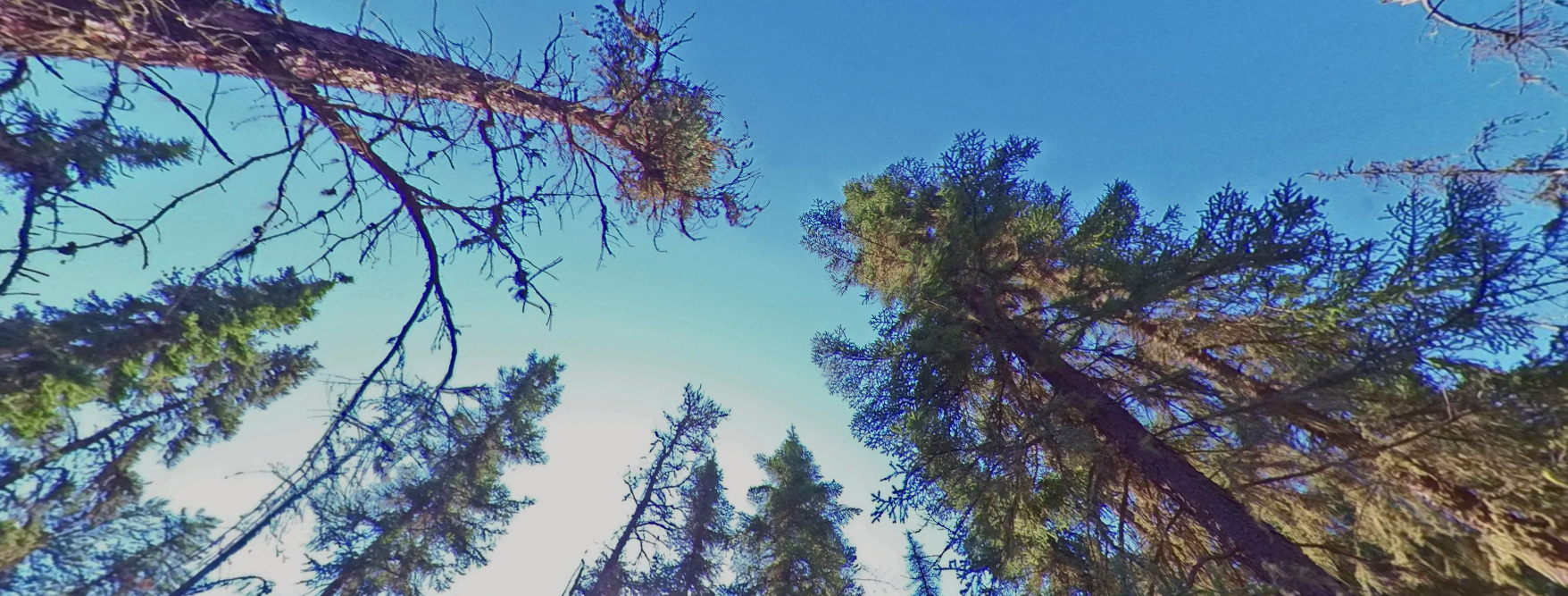
Work is already underway to restore disturbed habitat throughout Canada.
Restoring this landscape is complex, but it can benefit the entire ecosystem and contribute to improving wildlife habitat, including for the boreal caribou, which are listed as a threatened species under the federal Species at Risk Act. Work is already underway. The Government of Canada has a Caribou Recovery Strategy in place with the goal of achieving self-sustaining populations across Canada, and Natural Resources Canada’s Canadian Forest Service (NRCan-CFS) is in a unique position to provide expertise to enhance these recovery efforts, helping our forests to thrive for generations to come.
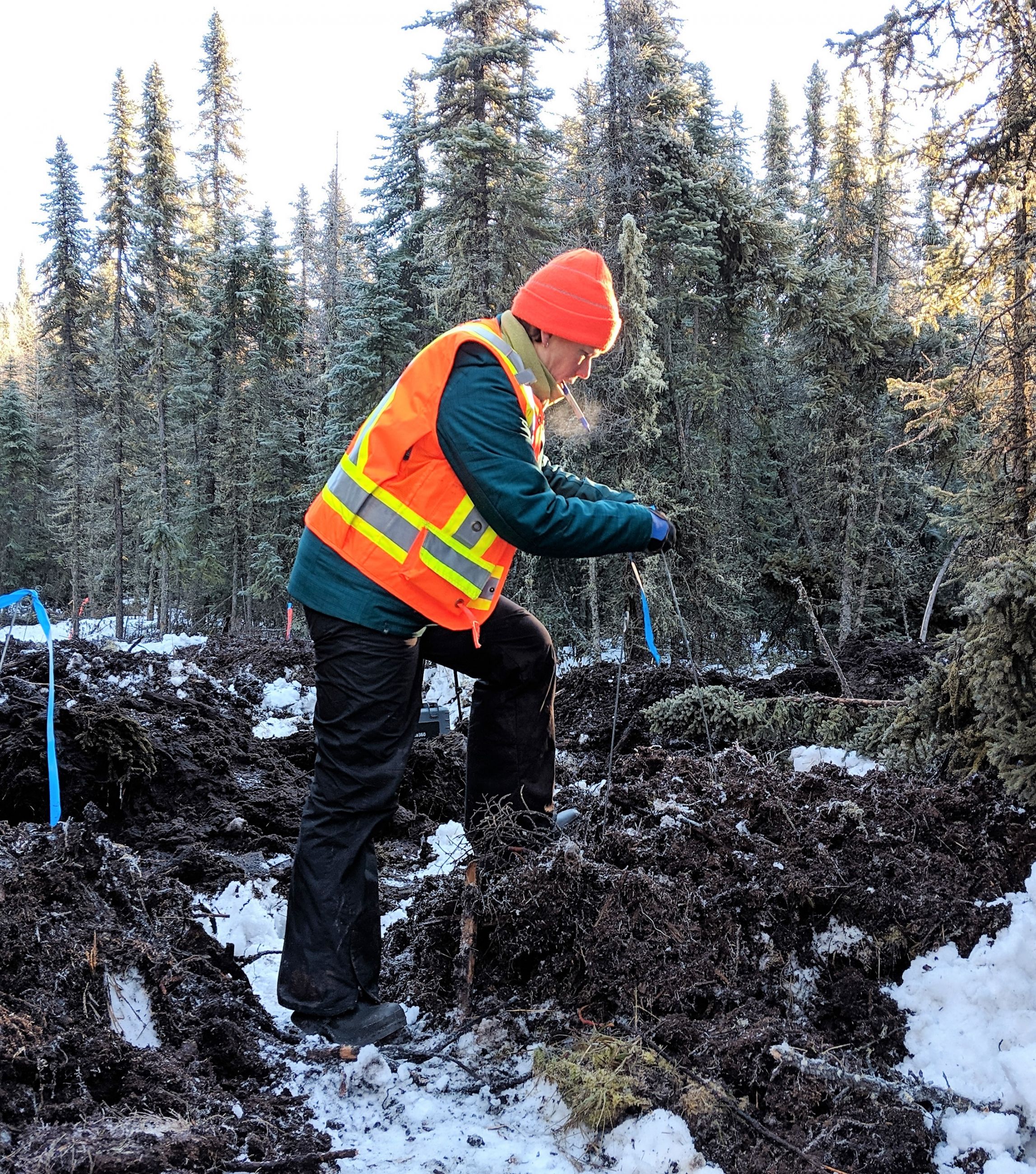
Larger image Katalijn MacAfee of CFS’s Cumulative Effects Program prepares a demonstration site in Northern Alberta.
A ready core of expertise
Recognizing the opportunity to access existing knowledge from the forest sector, the oil and gas sector asked to collaborate with CFS. “We’re world leaders when it comes to forestry practices,” says Katalijn MacAfee, of CFS’s Cumulative Effects Program.
“The oil and gas sector was investigating different practices to return forest cover to disturbed sites, and they realized that there was a ready core of expertise within the Canadian Forest Service. So we began to work together.”
Making the Connection
A useful, practical approach is the development of a Silviculture Tool Kit, a bundle of materials that includes videos, fact sheets and guidebooks to support the practice of growing trees and managing their life cycle, from seed to harvest. NRCan collaborated closely with Canada’s Oil Sands Innovation Alliance (COSIA) to develop this tool kit, which is designed to give top-level expertise and instruction to crews working to restore sites that have been disturbed.
It turns out that modern technology like 360-degree VR is a great tool for sharing information. By providing 360-degree VR images of all stages of the restoration effort, a full picture of restoration methods can be widely shared without the need to visit numerous sites.
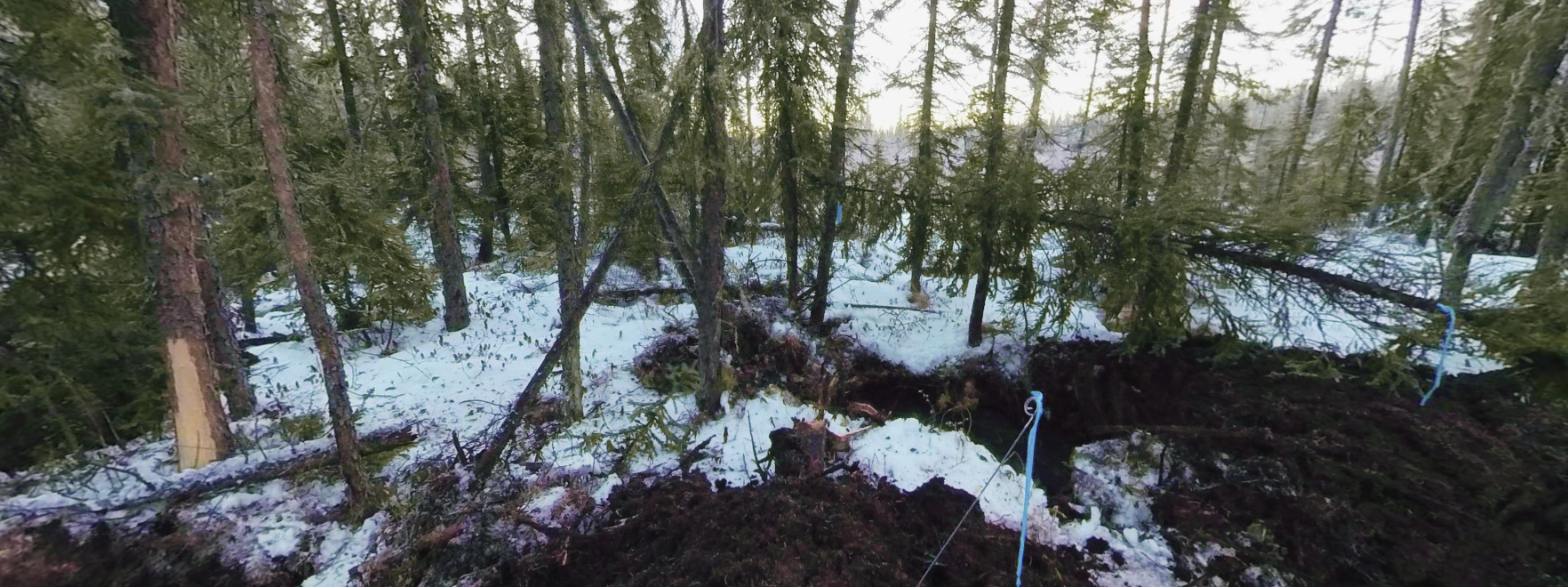
Larger image RECENTLY TREATED SEISMIC LINE. Special treatments are regularly used to create microsites so trees can grow in difficult lowlands. Amphibious excavators are needed to access the sites year-round.
Real-world Applications
Recently, Katalijn travelled to Northern Alberta to set up a demonstration restoration site and produce a “newly treated” 360-degree virtual reality scenario, in partnership with COSIA and Fuse Consulting. This demonstration site will explore the use of variable mound sizes in unfrozen conditions in an effort to speed up restoration in critical caribou habitat. Mounding is when an excavator or other equipment is used to make piles of soil to help create microsites for seedlings. The site will show how well the new recovery techniques are working, and followup 360-degree VR footage will visually document the progress. The team is also taking measurements to ensure the scientific validity of results.
“I’m really impressed with the desire from industry to make things better and their willingness to work closely with, and learn from, people like us who have a strong background in forestry,” adds Katalijn. “This collaboration really has been rewarding and has led to improved outcomes.”
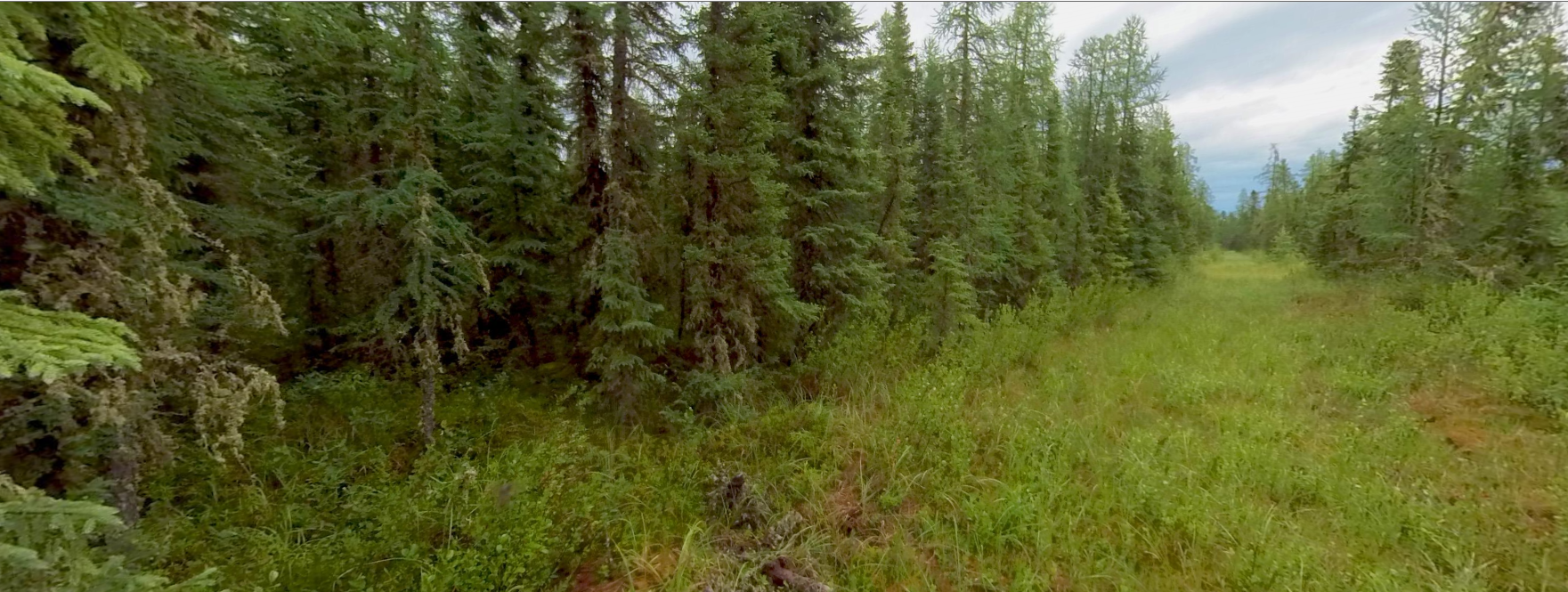
Larger image LOWLAND SEISMIC LINE SIX YEARS AFTER TREATMENT. This line was planted six years ago, and the trees have grown successfully on the mounds created for them.
There are literally thousands of kilometres of seismic lines crisscrossing Alberta and other parts of Canada. Studies indicate significant and persistent environmental changes along these paths.
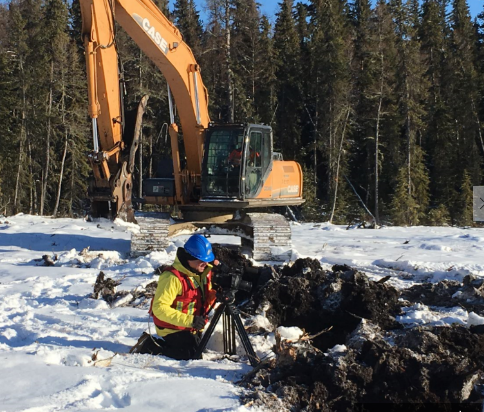
Larger image Preparing the demonstration site for restoration.
“These are tricky places that are often highly compacted, have poor microbial communities and are often overrun with competing vegetation, like weeds,” says Katalijn. All of this leads to changes in soil, plants, trees and wildlife, and can make returning these lines to forest cover extremely difficult. Here’s one vivid example: research shows wolves can travel two times faster on a seismic line than in the adjacent forest. In other words, these linear features create a highway for predators in search of prey, which is a real concern for boreal caribou.
For these and other reasons, NRCan and sector partners recognize the urgent need to identify ways to work toward restoration and return to forest cover.
While the focus now is on disturbed sites in the oil sands region of Alberta, much of the Silviculture Tool Kit information can be applied to other disturbed areas in the boreal forest, including mineral mining sites and forest roads.
In the future, thousands of kilometres of seismic lines could be treated thanks to the NRCan team and partners who are working together to restore one of Canada’s most valuable and renewable resource — our forests.
- To view 360 degree Virtual Reality click here
- For more information about the Silviculture Toolkit click here
- To see virtual tours of forest restoration and the silviculture tool kit, click here
Related stories
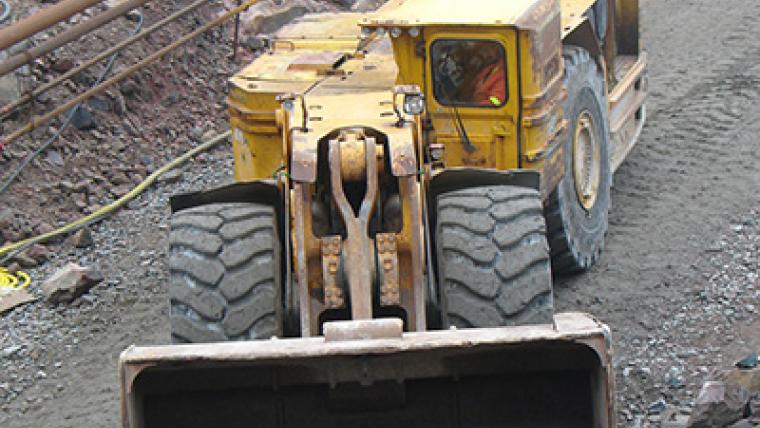
Hydrogen — the most abundant element in the world — has the potential to fuel underground mining vehicles, and Natural Resources Canada (NRCan) scientists are using its power in new technologies to bring clean energy to the mining industry.
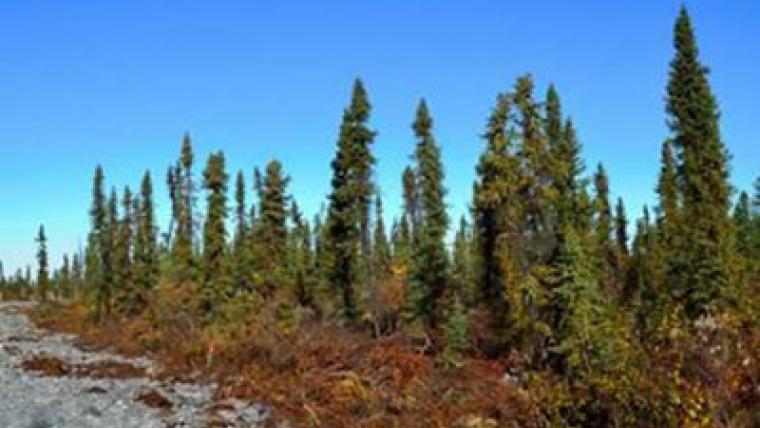
Would wild cherry trees thrive on Prince Edward Island today? Would apples grow in the orchard outside Green Gables? There’s now an app for that — My Tree.
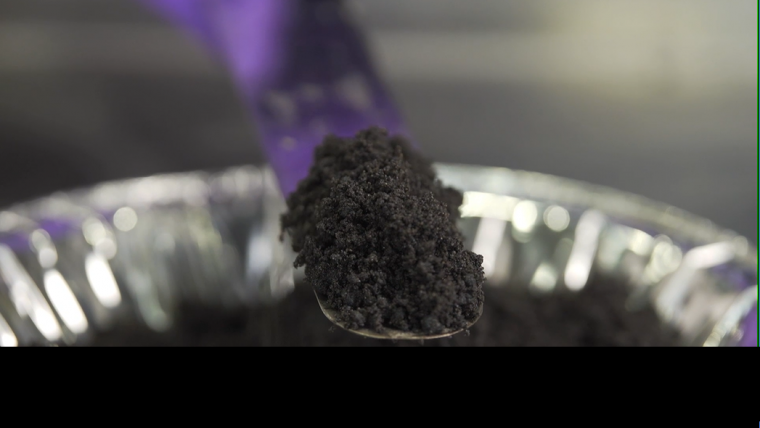
NRCan scientists are investigating innovative approaches to separating bitumen from sand. This approach could lead to eliminating the use of water in oil sands extraction.
Simply Science
- Search Simply Science
- Resource Packets
- Media Relations
- Sign up for our newsletter
Stay connected and follow us on any of our social media channels
Page details
Thank you for your help.
You will not receive a reply. For enquiries, contact us .
Wake Downtown
- Toggle Navigation
Take a Tour
Want to see what all the hype is about.
If you are interested in learning more about Wake Downtown we encourage you to visit in person. Official tours are offered on Monday’s & Friday’s starting at 1:00pm and take around 45 minutes. Please sign up using the link.
If the tour date your prefer happens to be full, the building is available for self-guided tours Monday-Friday, 9:00am-5:00pm. We have materials at the lobby desk and QR codes throughout the building which lead to videos and additional information regarding the courses and research taking place here.
Come on down! We’d love to see you!
Watch the virtual tour video below.
Click the button below to be directed to the admissions campus tour webpage.
Get an inside look at Wake Downtown with these 360-degree images. #WakeDowntown #WFU – Spherical Image – RICOH THETA
Exterior of Wake Downtown, Wake Forest’s 115,000 square-foot, STEM-centric urban campus in Winston-Salem’s fast-growing Innovation Quarter.
Wake Downtown’s second floor study lounge and seating area.
Wake Downtown’s first floor entryway and stairwell .
Wake Downtown’s first floor entryway and stairwell, featuring an art installation by Dempsy Calhoun.
One of the many common areas at Wake Downtown.
Wake Downtown Auditorium
Take a look inside the first class at Wake Downtown. These students at Wake Forest University in Winston-Salem, N.C. are part of the first Wake Downtown cohort. – Spherical Image – RICOH THETA
Rebecca Alexander, chemistry professor & director of academic programs at Wake Downtown, teaches her first biochemistry class in the new facility.
See images of Wake Downtown on its first day. Students at Wake Forest University in Winston-Salem, N.C. begin classes on Jan. 10, 2017. #WakeDowntown #WFU – Spherical Image – RICOH THETA
Biology graduate student Fadi Marayati works in a Wake Downtown lab.
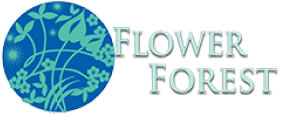
360 Virtual Tours
Our stunning virtual tours were created by Andrew Hulsmeier. See more of Andrew's work .
Forest Lake - 360 Virtual Tour
- Map Virtual Tour
Selected highlights from more than 50,000 panoramas worldwide
Open Virtual Tour:Hotel: Schwarzwald Panorama Hotel
Open Virtual Tour:Restaurant: Krabba Nescht
Open Virtual Tour:Hotel: Käppelehof
Open Virtual Tour:Hotel-Restaurant: Winzerstube Ihringen
360 Editor Picks
Share your best holiday videos and win great prices.
- Promote your Company with NextGen Virtual Tours
- Contact Tourist Office
- Panaramic Images around the World
What to do in Black Forest?
Discover attractions and business in 360 degrees.
- Sponsored by local business of Black Forest area -

In cooperation with:
Impressions from the very successful Annual Meeting 2018. The event under the motto "Change - To New Worlds" was a complete success. In the foyer of the event location we...
Parallel to the launch of the new social media campaign around the Black Forest virtual reality platform 360Schwarzwald.com, the video was broadcast by Baden TV. On the 5th...
To promote the Black Forest Tourism Virtual Reality-platform the new radio spot starts playing daily at Blackforestadio ... the radio & digital channel for classic hits...

The SC Freiburg has mentioned our project 360Schwarzwald.com in its current newsletter. The report was titled "Insider Tips in the Black Forest" and describes ways to...

"We want to make tourism the spearhead of digitization in the country," said Tourism Minister Guido Wolf on Wednesday at TMBW's press conference at the ITB in Berlin....

On 14 January 2017 the CMT will open with more than 2,000 exhibitors again. It present vacation sites, the most beautiful destinations from all over the world, the largest...
A lot of time has passed ... from the recordings on the Feldberg to the completion of the promotional video for the Schwarzwald Virtual Reality platform. The recordings have...
Udo Rauschenberger and Sandra Laeske have spoken together in the studio of Funkhaus Ortenau of Radio Ohr to talk about the marketing project of the future, the Schwarzwald...

Now it was finally time ... the first new high-end device with two 43-inch touch-screen displays ... took over in the foyer of the town hall of Schiltach. In addition to the...
Just right before the introduction of the new Schwarzwaldflat, he is now finally there ... our brandnew 360Schwarzarz.com radio spot!The main actors of the video clip, like...

The first photoshootings for the summer collection with 360 degrees panoramas for Schiltach have been completed and already integrated into the websites and directories of...

On 14th of August it finally happened that the group around the producer Udo Rauschenberger ... Schwarzwaldbotschafter Hansy Vogt, Jodeltoni Thomas Reitsamer from the Pinzgau...
Great weather and even better visitors made the Schwarzwald family day in the Schwarzwald Stadium a real success. In addition to the many great events, products and services...

Advertising for the guest of tomorrow presents enormous challenges for every region. New information technologies and media of the location & tourism market 4.0 make an...
About the website and the concept behind it I would like more information.
Fill out the form and we will contact you, highest quality 360° virtual tours on the market today, request a free quote and get a $100 credit.

- Virtual Tours
The employees of the tourism board and local tourist offices are always ready to help you with your concerns!
Discover Black Forest virtually with 360 degrees views of accommodations, attractions, events, activities and much more! Please send us your questions about appointments and availabilities via contact form.
If you have any questions regarding the Virtual Reality project, your local 360TOURIST-Expert is always at your disposal.
The treasures of the region are Multi-device capable (also 3D glasses) and designed to convince potential guests emotionally... this is our goal. "VIRTUAL REALITY" is the future! Encourage yourself as a sponsor. More information: www.360Standort.Marketing
The 360TOURIST-Team will be glad to provide you with exclusive offers for sponsors and/or local companies in the region.
Our attention to detail and technology provides the base to create 360° panoramic images in amazing quality. A portfolio of more than 100,000 panorama pictures and virtual tours from all over the world can be found on our travel portal at: www.360TOURIST.net
Experience Lake Forest College
Virtually explore Lake Forest College in a fully immersive 360-degree experience.
Aria doesn't work without JavaScript.
Need to know how to enable it? Go here.
Velo Forest Hills (LEGACY) - 360 Virtual Tour

IMAGES
VIDEO
COMMENTS
Remarkable Redwoods in 360 - Virtual Tour. Virtual Reality: Ranger-Led Walk in the Redwoods Join an interpretive ranger in series of VR episodes about some of the natural and cultural history of the park. Move your mouse, handheld device, or wear VR glasses to experience this in 360 degrees. ... Episode 1: Get To Know An Old-Growth Forest
Grassland Biome VR 360. This virtual biome explores the grasslands of the United States, across Iowa, South Dakota, Montana, and Wyoming. See how many different bird calls you can find and learn all about the types of grasslands that are disappearing from biologist Meghann Jarchow. Don't miss the butterfly video in this tour.
Take a virtual tour of Loch Arkaig. Immerse yourself in an interactive Loch Arkaig experience with our virtual tour, including 360 images, maps, video and sound. Our 360 tours let you explore the sights, sounds, history and wildlife of Loch Arakig, Tring Park, Llennyrch and more from home.
Explore the Redwood Forest National Park in the US State of California!For more 360 videos of the American Northwest, checkout our playlist:https://youtube.c...
Virtually Experience The Redwoods. Videos, Tours, and Lessons by Park Staff. Enjoy educational videos series, VR tours, and curriculum programs made by our education rangers. Learn About Fire at Redwood. Fire is a Part of California. Before you visit find out about air quality, wildfires in the area, and learn about our prescribed fires. Look up.
Virtual Reality In The Redwoods. We are thrilled to bring the redwoods in virtual reality to you. To experience our different VR video and photo series, you can use any VR headset for full immersion. If you don't have VR goggles, you can physically move the video/photo in any direction on your mobile device.
The Amazon rainforest is just a few clicks away with this new canopy-diving, sloth-dodging, immersive 360-degree virtual reality (VR) video. "Under the Canopy" is a new project from nonprofit ...
Virtual forest tour from VNU-HUS "Welcome to our forest". Doan Manh Linh and Nguyen Thi Van, students from VNU-HUS, are our guides through the campus forest in Hanoi. ... Another forest site close to Eberswalde University for Sustainable Development is now accessible by a virtual 360 degree tour. The former mixed beech-oak stand was ...
360° virtual forest tours (VFTs), created by state-of-the-art virtual reality technology, contribute to advance academic e-learning, forest management and environmental awareness. A virtual replication of real-world forest stands allows for repeatable experience in a specific area of interest, independently of the current weather conditions ...
360° virtual forest tours (VFTs), c reated by state-of-the-art virtual reality technology, contribute to the progression of academic e-learning and forest management. The article .
Please call us on 0845 644 3605 to discuss your requirements or arrange a meeting. Alternatively, you can fill out the short form on our contact page to tell us about your ideas. We'd love to hear from you. Explore the Great Trossachs Forest through the seasons with a landscape virtual tour. Created for The Woodland Trust by virtual tour ...
Great Trossachs Forest. Take a 360° virtual tour. Supported by BP thought the Scottish Forest Alliance About The Great Trossachs Forest The Great Trossachs Forest is a landscape scale (16,500 hectares), native woodland reestablishment and conservation project. It is a 200 year partnership project, which in just over ten years has earned itself ...
3D Stereo Virtual Tour of modern house located in forest.Switching between times of the day and foggy morning let you experience atmosphere of the living in the woods. The sounds of the forest during different times of the day give you another level of …
Recently, Katalijn travelled to Northern Alberta to set up a demonstration restoration site and produce a "newly treated" 360-degree virtual reality scenario, in partnership with COSIA and Fuse Consulting. This demonstration site will explore the use of variable mound sizes in unfrozen conditions in an effort to speed up restoration in ...
Watch the virtual tour video below. ... Request a Tour . 360° Tours. Get an inside look at Wake Downtown with these 360-degree images. #WakeDowntown #WFU - Spherical Image - RICOH THETA. Exterior of Wake Downtown, Wake Forest's 115,000 square-foot, STEM-centric urban campus in Winston-Salem's fast-growing Innovation Quarter. Get an ...
A conceptual framework for 360° VFT production and use to supplement field courses is proposed and Reflective insights into the authors' own learning process in the production of 360°VFTs are presented. 360° virtual forest tours (VFTs), created by state-of-the-art virtual reality technology, contribute to the progression of academic e-learning and forest management.
Increase conservation engagement. Leverage the transformative power of immersive storytelling with our 360 Virtual Tours. We work with land trusts and non-profit organizations to vividly capture and elevate conservation efforts in detail. You help your team showcase restoration projects and give supporters an interactive journey.
Welcome to our 360° virtual tour. Start 360° Tour Full Screen. Accessibility Statement. Velo Forest Hills - 360 Virtual Tour. Share Live slide here.
Flower Forest Botanical Gardens, Barbados. Open Daily 8am to 4pm. Plan A Visit. Entrance Fees, Opening Hours & Accessibility. Covid Protocols Do's and Dont's Tours ... 360 Virtual Tours. Our stunning virtual tours were created by Andrew Hulsmeier. See more of Andrew's work. Email. Call 246-433-8152. PLAN YOUR VISIT;
Welcome to our 360° virtual tour. Start 360° Tour Full Screen. Accessibility Statement. Forest Lake - 360 Virtual Tour. Share Live slide here.
Explore virtually Black Forest businesses and tourist attractions by incredible quality 360-degree 4K HD panoramic photos and interactive virtual tours powered by 360Tourist! This page needs JavaScript to perform functions correctly.
Open the accessible version of Lake Forest College's virtual experience. Experience Lake Forest College. Virtually explore Lake Forest College in a fully immersive 360-degree experience. Aria doesn't work without JavaScript.
Start 360° Tour Full Screen. Accessibility Statement. Velo Forest Hills - 360 Virtual Tour